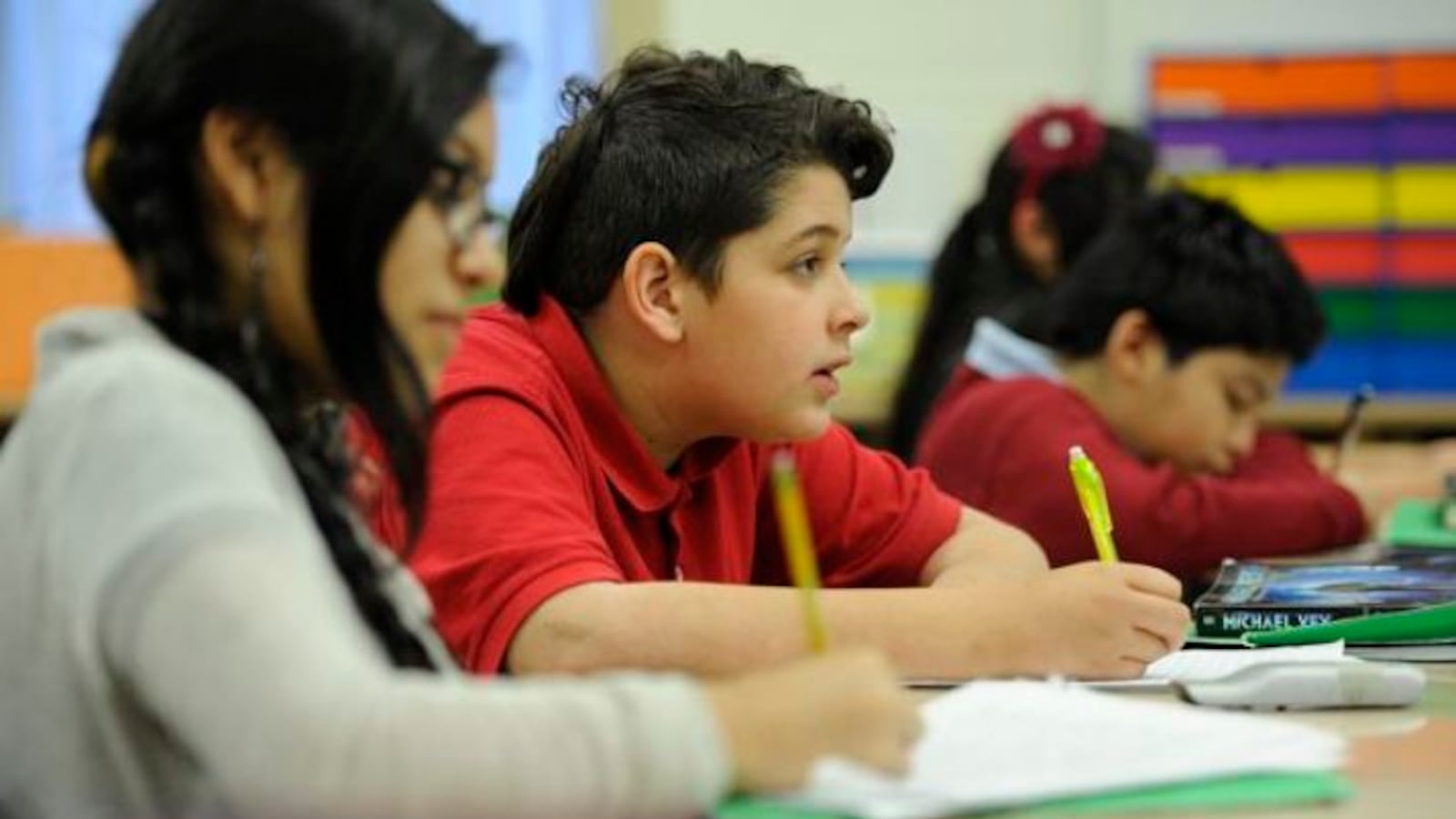Hundreds of students might have to retake part of the state’s mandated math exams after part of a Russian-language test was printed in the wrong language, officials said Wednesday.
The error affected about 200 eighth-grade students statewide, making it relatively minor compared to some past glitches. Mistakes on previous exams, including the translated tests, prompted the state to increase oversight of its hired test-maker, the publishing giant Pearson, and amend its $32 million contract with the company to include penalties for such mistakes.
The latest glitch comes as a growing number of parents are refusing to let their children take the annual exams, and follows protests in New York City last year organized by educators who said that year’s English tests were riddled with confusing questions.
The Russian-language math test, which is one of several translated versions the state provides for students whose native language is not English, contained multiple questions as well as directions and a reference sheet printed in the wrong language, state education department officials said. A principal who viewed the exam said the affected parts were printed in Korean.
“If you have a brand-new immigrant from Russia right now, they are clearly losing their minds,” said the principal, who spoke on the condition of anonymity due to a state rule that bars educators from discussing test material.
The state sent schools a notice about the error Wednesday as grade-school students across New York sat for the first of three days of math tests. Schools should receive corrected versions of the test Thursday, which students can use to retake just the misprinted questions or that entire section of the test, according to the memo from the director of the state’s assessment office, Steven Katz.
“At your discretion, please use the replacement test books that you receive tomorrow to provide a make-up opportunity” for affected students, Katz said in the memo, adding that the sections of the Russian-translated exam that students will take later this week were correctly printed.
“We apologize for any inconvenience this may have caused your school,” he added.
Pearson referred questions to the state education department. Department spokesman Tom Dunn could not say whether Pearson was responsible for the error or the state, which handles printing of the test materials. For that reason, Dunn was unsure whether Pearson would be penalized for the mistake. (The state’s contract with Pearson expires after this year and, in February, the state issued a request for proposals to create new computerized tests.)
Dunn said there have been “very, very few” mistakes on this year’s tests. That includes a reading passage on last week’s English exams that used different names for the same character in the title and the text, he added.
In 2012, the tests included several errors, including a widely ridiculed reading passage with the nonsensical theme, “Pineapples don’t wear sleeves.” In response, the state forced Pearson to change the way it selects and edits reading passages and to hire an independent group to check the foreign-language translations it provides. It also promised to amend the contract so that “unacceptable items or translation errors” would result in penalties.
Critics have also faulted the tests for including reading passages drawn from published texts that feature product names and for the “gag order” that keeps educators from discussing test items.
The principal who spotted the Korean passage on the Russian-language exam added that she and colleagues have spotted typos and other errors on past exams.
“They don’t know how to proofread,” she said about the state and the test-maker.


